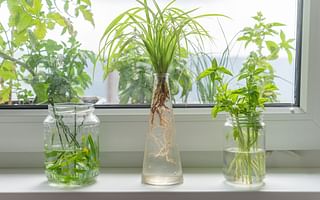Dedric Bednar is a passionate succulent enthusiast, boasting an impressive collection of more than 100 distinctive succulent species. He takes pleasure in studying the myriad of varieties and their specific care techniques. When he's not tending to his succulents, you can find Dedric engrossed in a good book or immersed in the world of video games.
Hey there! Thanks for reaching out with your question about soaking succulents in warm water. Let's dive right in!
When it comes to watering succulents, soaking them in warm water is not recommended. Succulents are unique plants that have adapted to survive in arid environments, and their roots are designed to absorb water efficiently. Soaking them in warm water can actually do more harm than good.
Succulents thrive in well-draining soil, so it's important to water them properly. Here are some succulent care tips to keep in mind:
1. Watering: The best way to water your succulents is by using the "soak and dry" method. This means thoroughly watering the soil until water drains out of the bottom of the pot, and then allowing the soil to dry out completely before watering again. This mimics the natural rainfall patterns in their native habitats.
2. Frequency: The frequency of watering will depend on various factors such as the type of succulent, the size of the pot, and the environmental conditions. As a general rule of thumb, water your succulents when the top inch of soil feels dry. Overwatering can lead to root rot and other issues, so it's better to underwater than overwater.
3. Temperature: Succulents prefer temperatures between 60°F (15°C) and 80°F (27°C). Extreme temperatures, whether hot or cold, can stress the plants. Avoid placing your succulents near drafty windows, heating vents, or air conditioning units. If you live in an area with harsh winters, it's important to protect your succulents from freezing temperatures.
4. Soil and Pot Selection: Succulents need well-draining soil to prevent waterlogged roots. You can create a suitable soil mix by combining regular potting soil with perlite or coarse sand to improve drainage. When it comes to pots, choose containers with drainage holes to allow excess water to escape. This helps prevent water from pooling at the bottom and causing root rot.
Remember, succulents are resilient plants, but they do have specific care requirements. By following these succulent care tips and avoiding soaking them in warm water, you'll be well on your way to keeping your succulents healthy and thriving.
I hope this answers your question! If you have any more doubts or need further guidance, feel free to ask. Happy succulent gardening!















